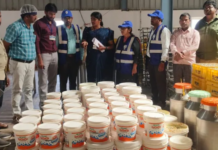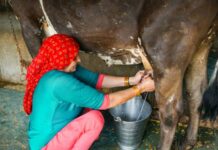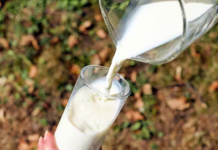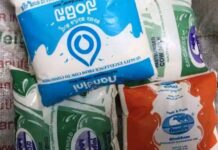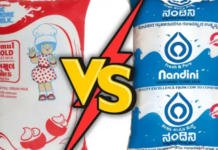Defence Food Research Laboratory (DFRL), Mysuru, has now developed a milk testing kit. This is to detect the microbial quality or freshness of milk. This technology has been transferred to Pearl Corporation, Mumbai.
The kit provides two test strips: MQ-1 and MQ-2. These strips reduce their natural colour within 30 minutes based on oxidation and slash the potential of milk caused by the load of the bacteria present.
The novel milk test kit also provides the conventional lactometer and a sample container to check the specific gravity of milk using the usual procedure. Addition of water in milk decreased the natural density of milk and can be interpreted easily on the spot. In fact specific gravity is also affected by the addition of the skim milk or removal of fat.
Though a lot of work has already been carried out in the detection of adulteration and quality in milk, often more than one test needs to be employed to confirm the purity of milk. Variety of milk adulteration testing kits are available commercially and all of them are in the ready to test solution or reagent form. Some of these reagents are risky to be handled by an unskilled person. Transporting and testing of these test kits in the field areas by an unskilled person is difficult especially in armed service locations.
“Keeping all these concerns in view, we have come up with an innovative concept – ready-to-use, convenient, cost-effective and easy-to-handle test strips to detect the chemical adulterants and establish freshness of milk as per user requirements. Our concepts of milk adulteration test and coming out with a variety of testing strips is first of its kind in the country,” stated Rakesh Kumar Sharma, director, DFRL.
“Use of the test strip is handy and never raises the problem of spilling chemical or reagents on the users. It has the ease of application from household to field level of services. The kit includes the strips to detect starch, urea, pulverised soap, detergents, hydrogen peroxide, boric acid and neutralisers,” he added.
Test results are easily distinguishable by observing the colour changes in the samples. Most of the test strips can detect an adulteration level at less than 0.5 per cent and are stable up to one year at room temperature conditions, according to him.
The strips are made of chemicals mainly used in the qualitative determination. The principle and working of the detection strips are about simple colour forming reactions resulting in pH variations and the formations of complex compounds.
The colour formation resulting in the tests are easily distinguishable within 10 minutes by the user and results are accurate and highly dependable.
Milk is susceptible to microbial contamination since it undergoes a lot of handling from dairy farm to the end-user. So establishing the quality of milk in terms of microbial quality is critical, according to the DFRL chief.




